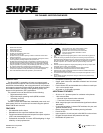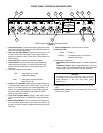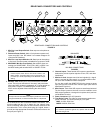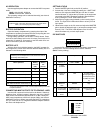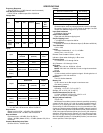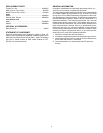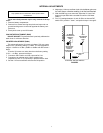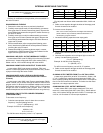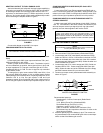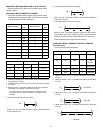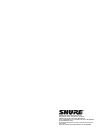6
REPLACEMENT PARTS
Foot Kit (4 in kit)........................................................... 90S8100
M367 Fuse, 0.125 A, 250 V ........................................... 80E380
M367E Fuse, 0.063 A, 250 V.........................................80G380
Knob
Master.......................................................................... 95A8238
Channel Gain, Phones................................................. 95B8238
Line (Power) Cord
M367............................................................................ 95A8389
M367E.......................................................................... 95B8389
OPTIONAL ACCESSORIES
Rack Mount Kit.................................................................A367R
STATEMENT OF CONFORMITY
Conforms to European Union directives, eligible to bear CE
marking; VDE GS-Certified to EN60065; meets European Union
EMC Immunity Requirements (EN 50 082-1, 1992): RF radiated
(IEC 801-3): meets Criterion A, ESD: meets Criterion B, EFT
(IEC 801-4): meets Criterion B.
GENERAL INFORMATION
Changes or modifications not expressly approved by Shure, Inc.
could void your authority to operate this equipment.
This equipment has been tested and found to comply with the limits
for a Class B digital device pursuant to Part 15 of the FCC Rules
and as set out in the Radio Interference Regulations of the Cana-
dian Department of Communications. These limits are designed to
provide reasonable protection against harmful interference in a
residential installation. This equipment generates, uses, and can
radiate radio frequency energy and, if not installed and used in ac-
cordance with the instructions, may cause harmful interference to
radio communications. However, there is no guarantee that inter-
ference will not occur in a particular installation. If this equipment
causes harmful interference to radio or television reception, deter-
mined by turning the equipment off and on, try to correct the inter-
ference by one or more of the following measures:
1. Reorient or relocate the receiving antenna.
2. Increase the separation between the equipment and receiver.
3. Connect the equipment into an outlet on a circuit different from
that to which the receiver is connected.
4. Consult the dealer or an experienced radio/TV technician
for help.



